
The Science
Each text and photo block below links to the original paper unless it contains more than one link within the text.
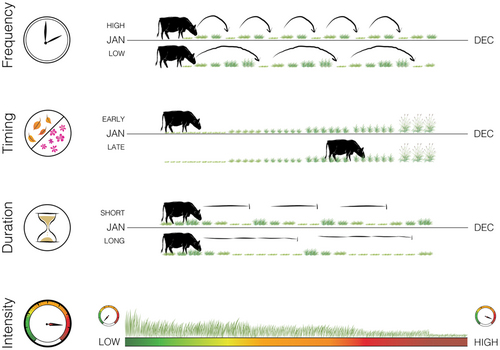 This paper set out to review the effects of grazing management on soil organic carbon (SOC) through a unified plant ecophysiology and soil biogeochemistry conceptual framework. The focus is on how common management levers that drive overall grazing pattern, including timing, intensity, duration, and frequency can be used to optimize SOC sequestration.
This paper set out to review the effects of grazing management on soil organic carbon (SOC) through a unified plant ecophysiology and soil biogeochemistry conceptual framework. The focus is on how common management levers that drive overall grazing pattern, including timing, intensity, duration, and frequency can be used to optimize SOC sequestration. 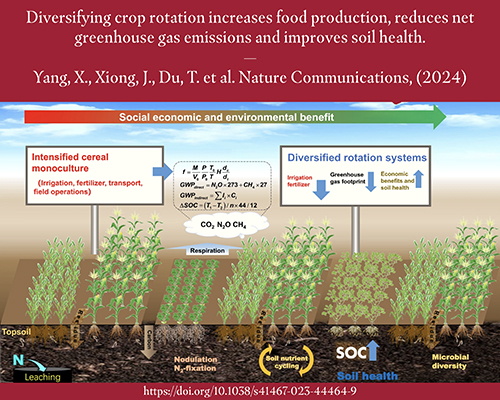 Replacing a traditional cereal monoculture (wheat or maize) with diversified cash crops of cereal, sweet potatoes, and legumes (peanut and soybean) resulted in a reduction of N2O emissions of 39% and improved greenhouse gas balance by 88% while increasing yield by 38%. Other improvements noted included increased soil microbial activity and diversity and increased soil organic carbon.
Replacing a traditional cereal monoculture (wheat or maize) with diversified cash crops of cereal, sweet potatoes, and legumes (peanut and soybean) resulted in a reduction of N2O emissions of 39% and improved greenhouse gas balance by 88% while increasing yield by 38%. Other improvements noted included increased soil microbial activity and diversity and increased soil organic carbon.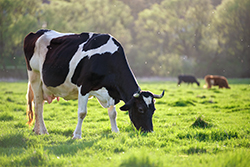 This study suggests that grazing facilitates soil organic carbon formation from plant litter by regulating the microenvironment via defoliation and trampling.
This study suggests that grazing facilitates soil organic carbon formation from plant litter by regulating the microenvironment via defoliation and trampling.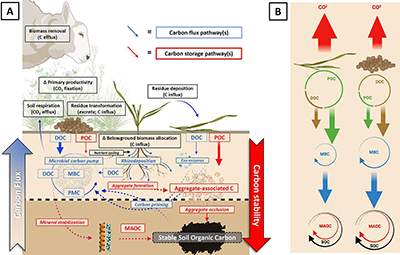 The latest research on long-term integrated crop-livestock grazing shows that this regenerative approach shifts microbial communities toward efficient biomass accumulation and increases carbon storage.
The latest research on long-term integrated crop-livestock grazing shows that this regenerative approach shifts microbial communities toward efficient biomass accumulation and increases carbon storage.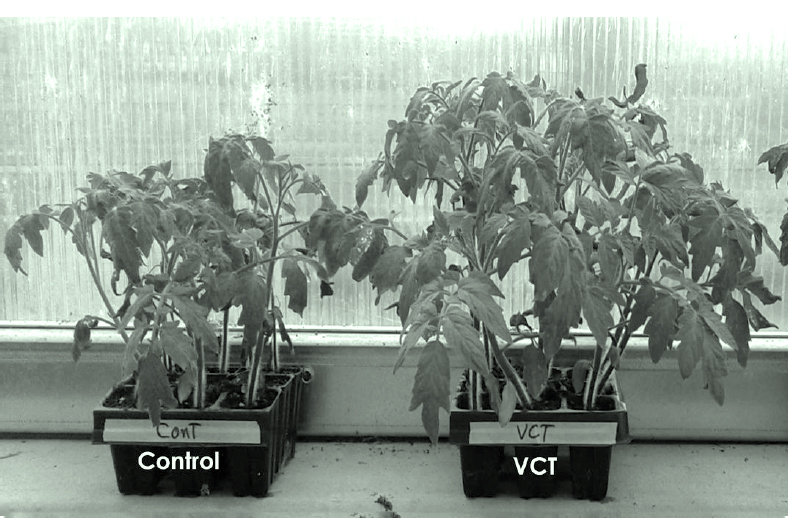 This study shows that the impact of vermiculture compost tea is highly significant for tomato plants, but the effect is more due to the chemical aspect of the fertilizer rather than microbiological.
This study shows that the impact of vermiculture compost tea is highly significant for tomato plants, but the effect is more due to the chemical aspect of the fertilizer rather than microbiological.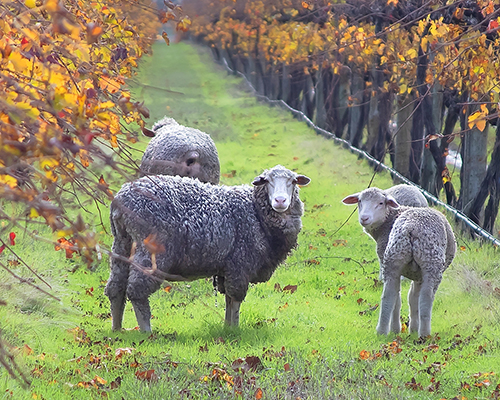 Study about long-term integration of sheep grazing in perennial cropland systems in California shows positive results for soil carbon sequestration.
Study about long-term integration of sheep grazing in perennial cropland systems in California shows positive results for soil carbon sequestration. 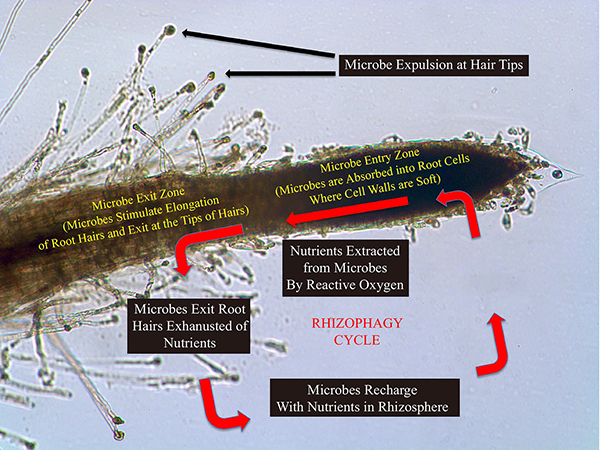 This study explores the way several farming processes interrupt the rhizophagy cycle.
This study explores the way several farming processes interrupt the rhizophagy cycle.
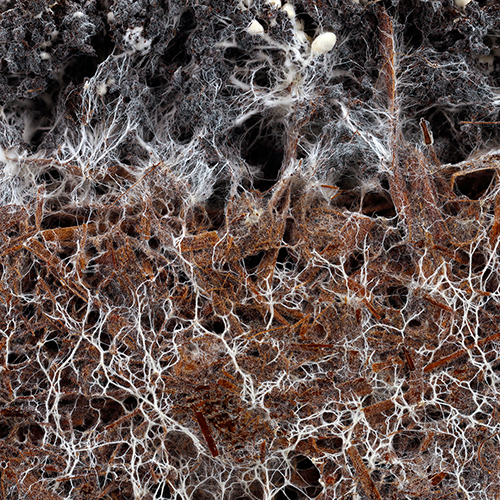 Researchers analyzed almost 200 datasets to provide the first global quantitative estimates of carbon allocation from plants to the mycelium of mycorrhizal fungi. Based on this data they estimate that ∼36% of current annual CO2 emissions from fossil fuels is allocated to the underground mycelium of mycorrhizal fungi, at least temproarily, every year. They say that despite knowing that their estimations are imperfect, it is based on the best data available, and they believe their estimates are conservative. That is because of the fungi's indirect influence on carbon accrual processes. They encourage mycorrhizal fungi to be included both within global climate and carbon cycling models, and within conservation policy and practice.
Researchers analyzed almost 200 datasets to provide the first global quantitative estimates of carbon allocation from plants to the mycelium of mycorrhizal fungi. Based on this data they estimate that ∼36% of current annual CO2 emissions from fossil fuels is allocated to the underground mycelium of mycorrhizal fungi, at least temproarily, every year. They say that despite knowing that their estimations are imperfect, it is based on the best data available, and they believe their estimates are conservative. That is because of the fungi's indirect influence on carbon accrual processes. They encourage mycorrhizal fungi to be included both within global climate and carbon cycling models, and within conservation policy and practice. Soil organic carbon sequestration (SOC) is a promising climate change mitigation option, in particular in the formation of relatively long-lived mineral-associated organic carbon (MAOC). However, soils have been considered to be limited in this capacity. In this study, using the comprehensive German Agricultural Soil Inventory, researchers studied 189 samples with a wide range of SOC (5–118 g kg−1) and clay contents (30–770 g kg−1) to test whether there is a detectable upper limit of MAOC content. They found that the proportion of MAOC was surprisingly stable for soils under cropland and grassland use across the whole range of bulk SOC contents. No upper limit was discovered.
Soil organic carbon sequestration (SOC) is a promising climate change mitigation option, in particular in the formation of relatively long-lived mineral-associated organic carbon (MAOC). However, soils have been considered to be limited in this capacity. In this study, using the comprehensive German Agricultural Soil Inventory, researchers studied 189 samples with a wide range of SOC (5–118 g kg−1) and clay contents (30–770 g kg−1) to test whether there is a detectable upper limit of MAOC content. They found that the proportion of MAOC was surprisingly stable for soils under cropland and grassland use across the whole range of bulk SOC contents. No upper limit was discovered.
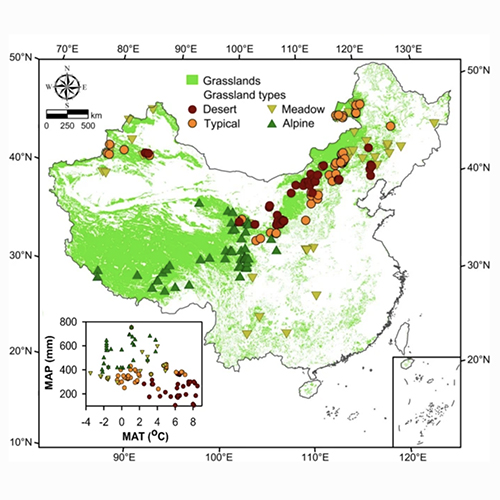 More evidence is coming in every day that HOW we graze livestock is the key to shifting degradation to regeneration! This time the research is from China in four different grassland types, grazing intensity, and duration across large geographic scales. How well the grass regrew and the grassland regenerated depended on grassland type and duration of grazing. Light grazing was best for desert steppes, medium grazing for meadow steppes, and heavy grazing leading to overgrazing was bad for all environments. Proper management for the specific environment led to the best plant biomass and soil carbon accrual.
More evidence is coming in every day that HOW we graze livestock is the key to shifting degradation to regeneration! This time the research is from China in four different grassland types, grazing intensity, and duration across large geographic scales. How well the grass regrew and the grassland regenerated depended on grassland type and duration of grazing. Light grazing was best for desert steppes, medium grazing for meadow steppes, and heavy grazing leading to overgrazing was bad for all environments. Proper management for the specific environment led to the best plant biomass and soil carbon accrual.
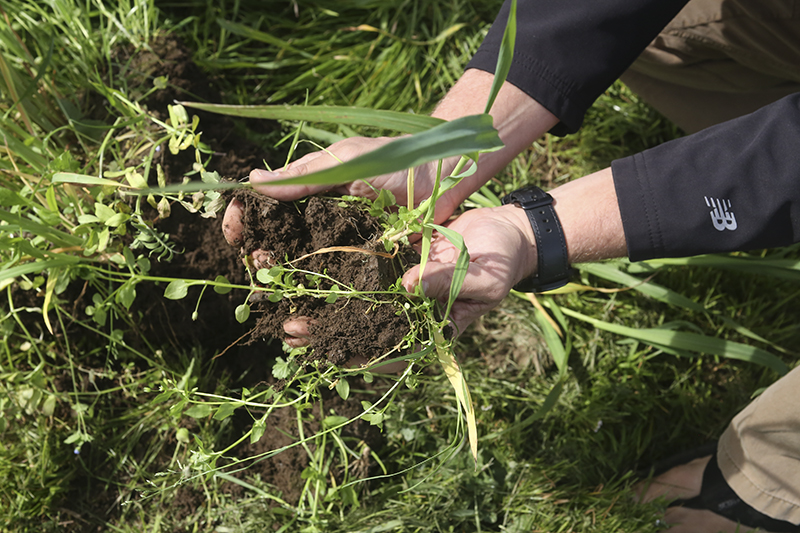 This study investigated multiple regenerative agricultural practices including no-till, cropping system intensification, and integrated crop–livestock on two aspects of organic soil carbon: particulate organic carbon (POC) and mineral associated organic carbon (MAOC). They found that all these practices helped increase POC and MAOC and that using more than one practice together increased it quite a bit more.
This study investigated multiple regenerative agricultural practices including no-till, cropping system intensification, and integrated crop–livestock on two aspects of organic soil carbon: particulate organic carbon (POC) and mineral associated organic carbon (MAOC). They found that all these practices helped increase POC and MAOC and that using more than one practice together increased it quite a bit more.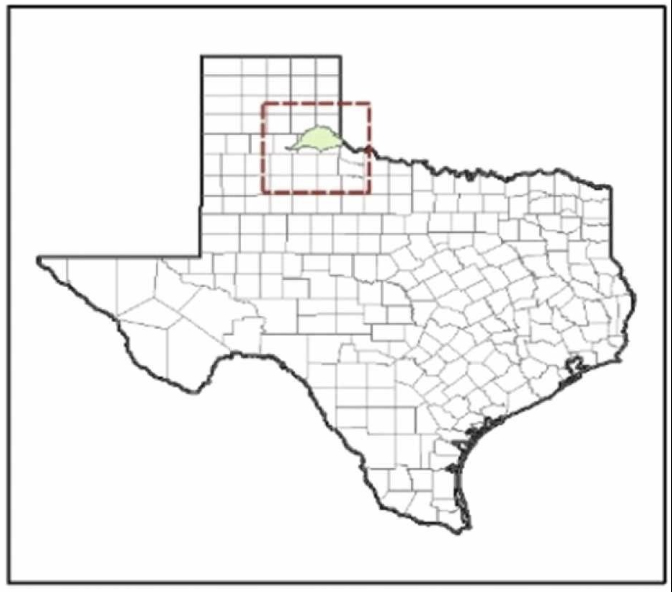 Results indicate that compared to heavy continuous grazing,adaptive multi-paddock grazing performed better with respect to soil organic carbon increase. There were also soil ecosystem and hydrological functions at both the ranch and watershed scales in the study watershed.
Results indicate that compared to heavy continuous grazing,adaptive multi-paddock grazing performed better with respect to soil organic carbon increase. There were also soil ecosystem and hydrological functions at both the ranch and watershed scales in the study watershed. 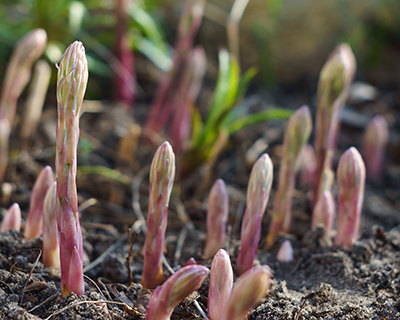 Recent studies show that the antioxidant ergothioneine may be important in preventing many inflammatory diseases in humans. Unfortunately, ergothioneine is not produced by humans or plants. It is only made by fungi and some bacteria in soils so humans get ergothioneine by eating fungi (mushrooms) or from plants that take it up from soil that contains adequate microbial abundance and diversity. In this study, researchers found that growing plants inoculated with arbuscular mycorrhizal fungi increased the amount of ergothioneine in plant tissues. This suggests that soil health practices that maintain healthy populations of beneficial soil fungi may also improve the nutritional quality of the food grown in such an environment.
Recent studies show that the antioxidant ergothioneine may be important in preventing many inflammatory diseases in humans. Unfortunately, ergothioneine is not produced by humans or plants. It is only made by fungi and some bacteria in soils so humans get ergothioneine by eating fungi (mushrooms) or from plants that take it up from soil that contains adequate microbial abundance and diversity. In this study, researchers found that growing plants inoculated with arbuscular mycorrhizal fungi increased the amount of ergothioneine in plant tissues. This suggests that soil health practices that maintain healthy populations of beneficial soil fungi may also improve the nutritional quality of the food grown in such an environment.
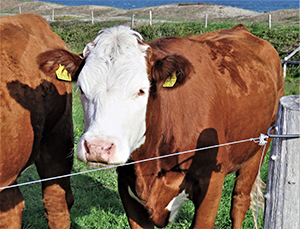 Adaptive multi-paddock (AMP) grazing was compared to conventional grazing (CG) in regards to pasture productivity, soil food web structure, soil organic carbon and soil microbial respiration efficiency on five southeastern US, across-the-fence ranch pairs. Results showed that AMP grazing systems outperformed CG systems by generating more standing crop biomass, promoting 46% higher pasture photosynthetic capacity, higher fungal biomass and fungal to bacterial ratios, etc.
Adaptive multi-paddock (AMP) grazing was compared to conventional grazing (CG) in regards to pasture productivity, soil food web structure, soil organic carbon and soil microbial respiration efficiency on five southeastern US, across-the-fence ranch pairs. Results showed that AMP grazing systems outperformed CG systems by generating more standing crop biomass, promoting 46% higher pasture photosynthetic capacity, higher fungal biomass and fungal to bacterial ratios, etc.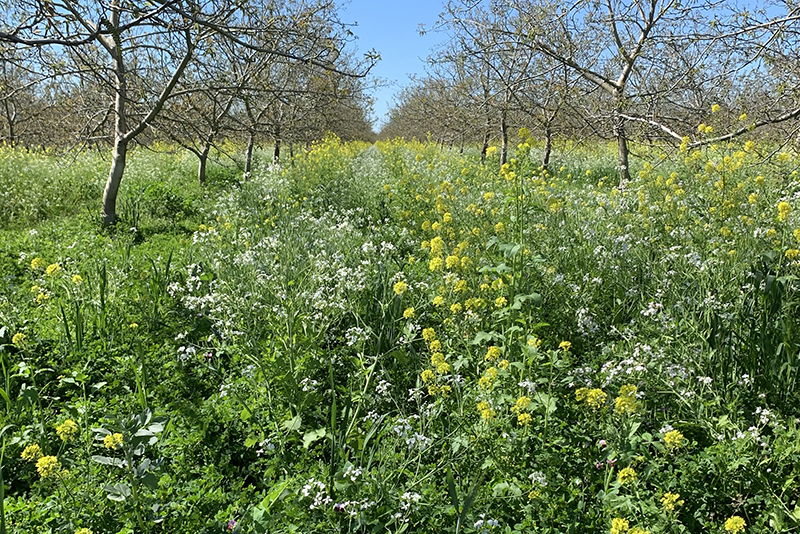 In this study several varieties of cover crops were tested for their effects on soil organic carbon (SOC). All the species tested increased SOC compared to fallow but did so in different ways and to different extents. Multi-species cover crops show potential to capture carbon in the soil most efficiently.
In this study several varieties of cover crops were tested for their effects on soil organic carbon (SOC). All the species tested increased SOC compared to fallow but did so in different ways and to different extents. Multi-species cover crops show potential to capture carbon in the soil most efficiently.
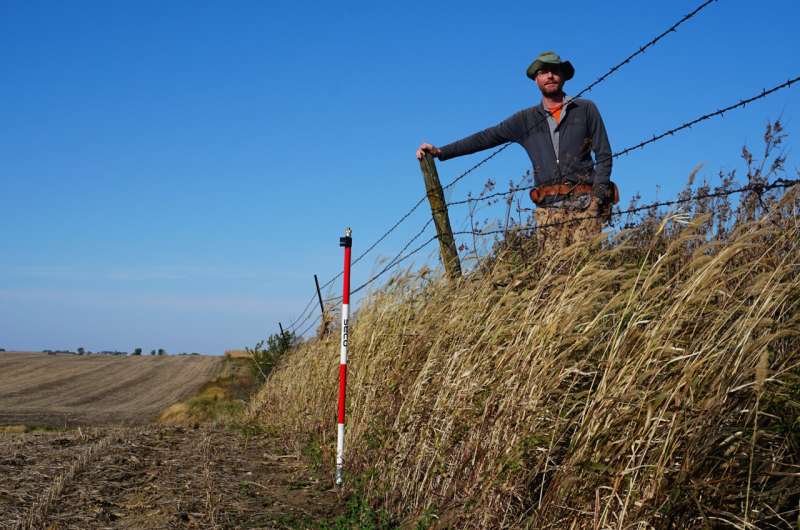 Remnants of native prairie perch high above the surrounding farmland, showing the amount of erosion visually and providing an opportunity to measure historical soil erosion rates. This study used high-resolution topographic surveys conducted at the boundary between 20 prairies and adjacent agricultural fields. Median reduction in soil thickness ranged from 0.04 to 0.69 m, corresponding to erosion rates of 0.2–4.3 mm year−1, with a median value of 1.9 mm year−1. Researchers estimate a median historical erosion rate of 1.8 ± 1.2 mm year−1—almost double the rate considered acceptable by the U.S. Department of Agriculture.
Remnants of native prairie perch high above the surrounding farmland, showing the amount of erosion visually and providing an opportunity to measure historical soil erosion rates. This study used high-resolution topographic surveys conducted at the boundary between 20 prairies and adjacent agricultural fields. Median reduction in soil thickness ranged from 0.04 to 0.69 m, corresponding to erosion rates of 0.2–4.3 mm year−1, with a median value of 1.9 mm year−1. Researchers estimate a median historical erosion rate of 1.8 ± 1.2 mm year−1—almost double the rate considered acceptable by the U.S. Department of Agriculture. 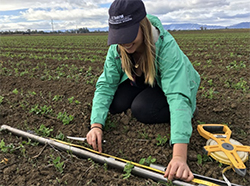 Results from a 3-year study suggest that processing tomato and almond growers can adopt winter cover cropping without changing irrigation practices.
Results from a 3-year study suggest that processing tomato and almond growers can adopt winter cover cropping without changing irrigation practices.
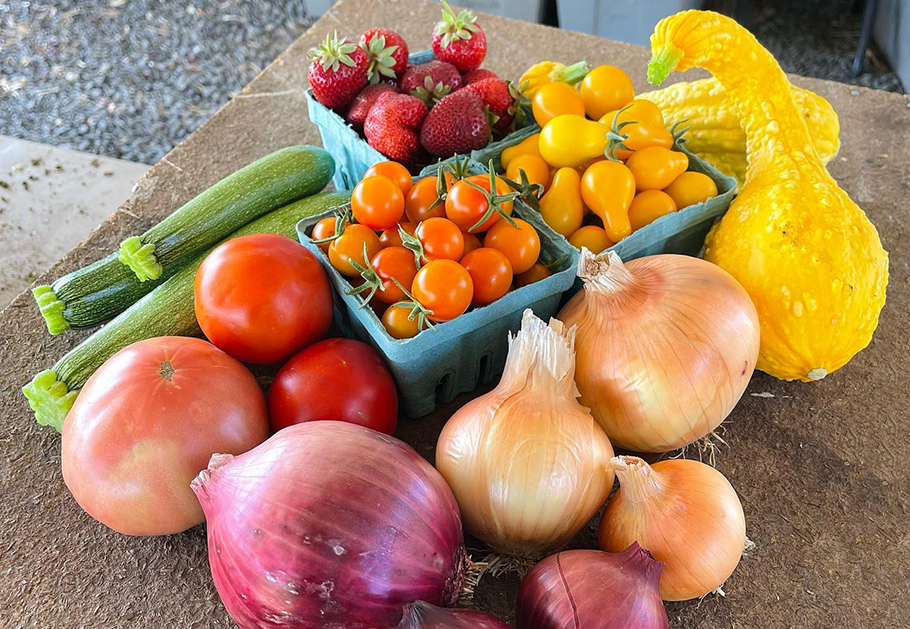 Abstract: "Several independent comparisons indicate regenerative farming practices enhance the nutritional profiles of crops and livestock. Measurements from paired farms across the United States indicate differences in soil health and crop nutrient density between fields worked with conventional (synthetically-fertilized and herbicide-treated) or regenerative practices for 5 to 10 years. Specifically, regenerative farms that combined no-till, cover crops, and diverse rotations—a system known as Conservation Agriculture—produced crops with higher soil organic matter levels, soil health scores, and levels of certain vitamins, minerals, and phytochemicals. In addition, crops from two regenerative no-till vegetable farms, one in California and the other in Connecticut, had higher levels of phytochemicals than values reported previously from New York supermarkets. Moreover, a comparison of wheat from adjacent regenerative and conventional no-till fields in northern Oregon found a higher density of mineral micronutrients in the regenerative crop. Finally, a comparison of the unsaturated fatty acid profile of beef and pork raised on one of the regenerative farms to a regional health-promoting brand and conventional meat from local supermarkets, found higher levels of omega-3 fats and a more health-beneficial ratio of omega-6 to omega-3 fats. Despite small sample sizes, all three crop comparisons show differences in micronutrient and phytochemical concentrations that suggest soil health is an under-appreciated influence on nutrient density, particularly for phytochemicals not conventionally considered nutrients but nonetheless relevant to chronic disease prevention. Likewise, regenerative grazing practices produced meat with a better fatty acid profile than conventional and regional health-promoting brands. Together these comparisons offer preliminary support for the conclusion that regenerative soil-building farming practices can enhance the nutritional profile of conventionally grown plant and animal foods."
Abstract: "Several independent comparisons indicate regenerative farming practices enhance the nutritional profiles of crops and livestock. Measurements from paired farms across the United States indicate differences in soil health and crop nutrient density between fields worked with conventional (synthetically-fertilized and herbicide-treated) or regenerative practices for 5 to 10 years. Specifically, regenerative farms that combined no-till, cover crops, and diverse rotations—a system known as Conservation Agriculture—produced crops with higher soil organic matter levels, soil health scores, and levels of certain vitamins, minerals, and phytochemicals. In addition, crops from two regenerative no-till vegetable farms, one in California and the other in Connecticut, had higher levels of phytochemicals than values reported previously from New York supermarkets. Moreover, a comparison of wheat from adjacent regenerative and conventional no-till fields in northern Oregon found a higher density of mineral micronutrients in the regenerative crop. Finally, a comparison of the unsaturated fatty acid profile of beef and pork raised on one of the regenerative farms to a regional health-promoting brand and conventional meat from local supermarkets, found higher levels of omega-3 fats and a more health-beneficial ratio of omega-6 to omega-3 fats. Despite small sample sizes, all three crop comparisons show differences in micronutrient and phytochemical concentrations that suggest soil health is an under-appreciated influence on nutrient density, particularly for phytochemicals not conventionally considered nutrients but nonetheless relevant to chronic disease prevention. Likewise, regenerative grazing practices produced meat with a better fatty acid profile than conventional and regional health-promoting brands. Together these comparisons offer preliminary support for the conclusion that regenerative soil-building farming practices can enhance the nutritional profile of conventionally grown plant and animal foods."
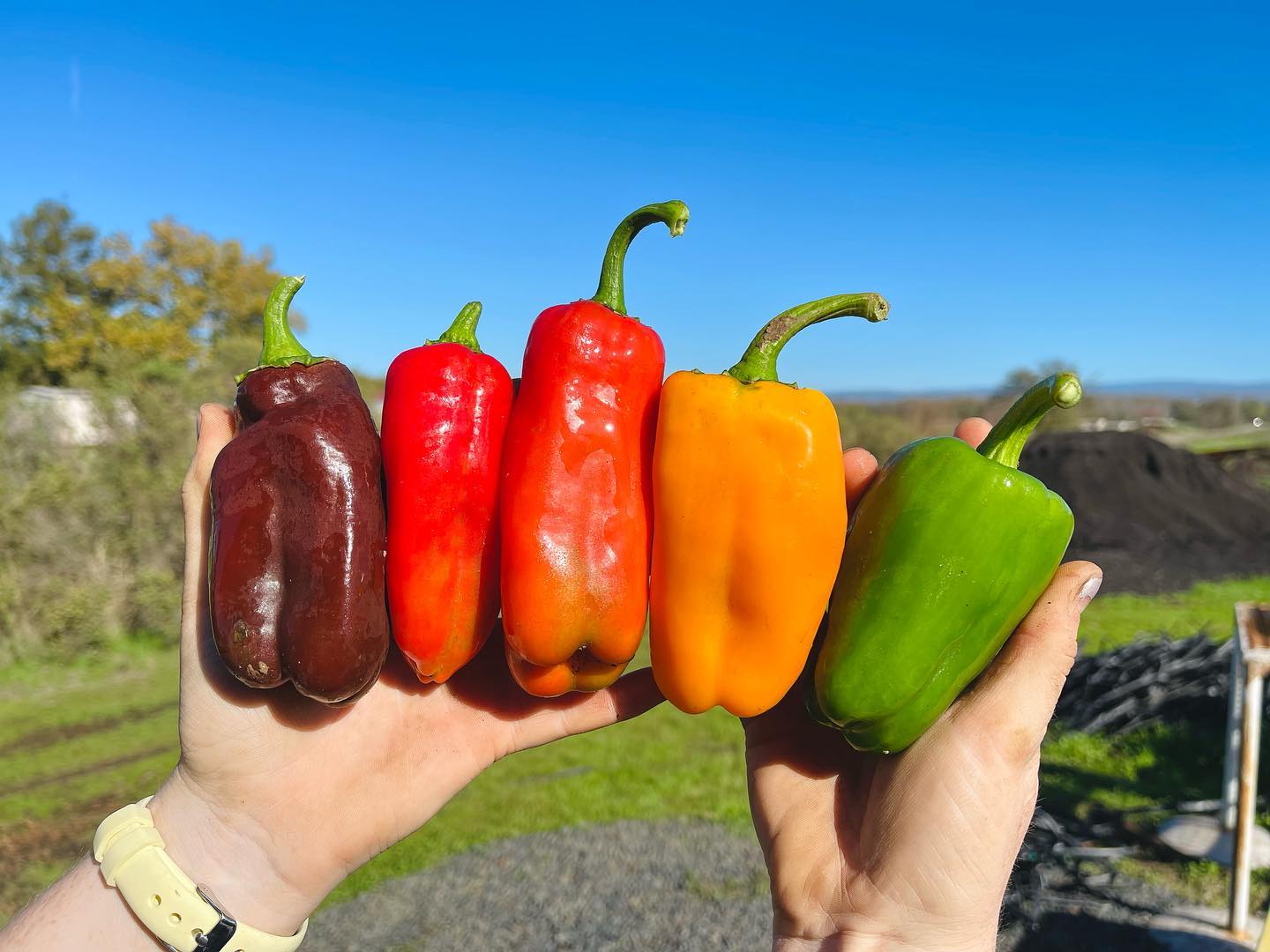 Recent studies have shown how tillage and synthetic nitrogen fertilizers influence soil health in ways that can reduce mineral micronutrient uptake and phytochemical production by the crops we consume. A review of previous studies and meta-studies finds little evidence for significant differences in crop macronutrient levels between organic and conventional farming practices. However, some significant studies show that organically grown crops contain higher levels of phytochemicals shown to exhibit health-protective antioxidant and anti-inflammatory properties. The authors conclude that part of the long-running controversy over nutritional differences between organic and conventional crops appears to arise from different definitions of what constitutes a nutrient—the conventional definition of dietary constituents necessary for growth and survival, or a broader one that also encompasses compounds beneficial for maintenance of health and prevention of chronic disease. Chronic inflammatory diseases have become epidemic in modern society. This paper makes the case that truly assessing the effects of farming practices on nutrient density and soil health needs to include the micronutrients and phytochemicals that prevent these conditions and support human health maintenance and well-being.
Recent studies have shown how tillage and synthetic nitrogen fertilizers influence soil health in ways that can reduce mineral micronutrient uptake and phytochemical production by the crops we consume. A review of previous studies and meta-studies finds little evidence for significant differences in crop macronutrient levels between organic and conventional farming practices. However, some significant studies show that organically grown crops contain higher levels of phytochemicals shown to exhibit health-protective antioxidant and anti-inflammatory properties. The authors conclude that part of the long-running controversy over nutritional differences between organic and conventional crops appears to arise from different definitions of what constitutes a nutrient—the conventional definition of dietary constituents necessary for growth and survival, or a broader one that also encompasses compounds beneficial for maintenance of health and prevention of chronic disease. Chronic inflammatory diseases have become epidemic in modern society. This paper makes the case that truly assessing the effects of farming practices on nutrient density and soil health needs to include the micronutrients and phytochemicals that prevent these conditions and support human health maintenance and well-being.
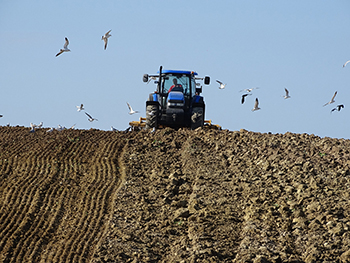 Ergothioneine is an amino acid with potent antioxidant and anti-inflammatory effects produced mainly by non-yeast fungi, cyanobacteria, and mycobacteria. Mounting evidence suggests that it can mitigate several chronic diseases of aging, in particular heart disease, Alzheimer's Disease and Parkinson's disease. Although Ergothioneine is not produced by plants it is found in plant products because soil fungi pass on the amino acid to plants through their roots. Soil tillage has been shown to reduce soil fungal biomass. This study tested Ergothioneine contents in maize, soybeans, and oats grown in soil managed with annual moldboard plowing (most intensive), chisel/disking (less intensive), and no-tillage (least intensive). Ergothioneine concentrations declined in all three crops as tillage intensity increased by approximately 30%. Crop yield was also negatively impacted by intensive tillage. This study is one of the first to show that soil health improving practices that minimize soil disturbance can directly impact a key dietary factor associated with human health.
Ergothioneine is an amino acid with potent antioxidant and anti-inflammatory effects produced mainly by non-yeast fungi, cyanobacteria, and mycobacteria. Mounting evidence suggests that it can mitigate several chronic diseases of aging, in particular heart disease, Alzheimer's Disease and Parkinson's disease. Although Ergothioneine is not produced by plants it is found in plant products because soil fungi pass on the amino acid to plants through their roots. Soil tillage has been shown to reduce soil fungal biomass. This study tested Ergothioneine contents in maize, soybeans, and oats grown in soil managed with annual moldboard plowing (most intensive), chisel/disking (less intensive), and no-tillage (least intensive). Ergothioneine concentrations declined in all three crops as tillage intensity increased by approximately 30%. Crop yield was also negatively impacted by intensive tillage. This study is one of the first to show that soil health improving practices that minimize soil disturbance can directly impact a key dietary factor associated with human health.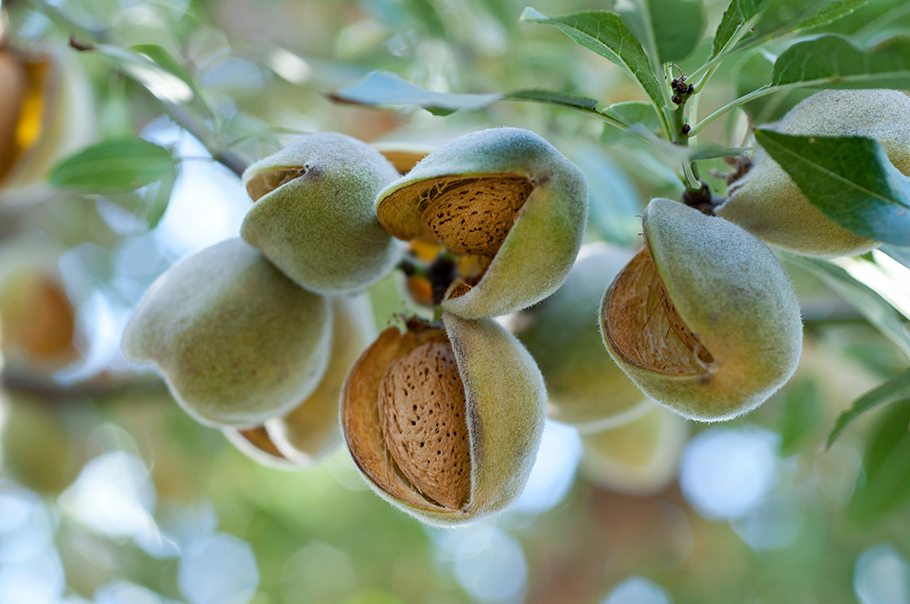 Conventional and regenerative almond orchards in California were compared in terms of soil health, biodiversity, yield, and profit. The orchards were chosen to represent what are considered the best practices of each approach. Regenerative practices included reducing or eliminating synthetic agrichemicals, planting perennial ground covers, integrating livestock, maintaining non-crop habitat, and using composts and compost teas. Total soil carbon, soil organic matter, total soil nitrogen, total soil phosphorous, calcium, sulfur, and soil health test scores were all significantly greater in regenerative soils. Water infiltratration was six times faster in regenerative orchard soils. Microbial biomass, plant biomass, and species diversity, were significantly greater in regenerative orchards. Yields were similar in the two systems but profit was twice as high in the regenerative orchards relative to their conventional counterparts.
Conventional and regenerative almond orchards in California were compared in terms of soil health, biodiversity, yield, and profit. The orchards were chosen to represent what are considered the best practices of each approach. Regenerative practices included reducing or eliminating synthetic agrichemicals, planting perennial ground covers, integrating livestock, maintaining non-crop habitat, and using composts and compost teas. Total soil carbon, soil organic matter, total soil nitrogen, total soil phosphorous, calcium, sulfur, and soil health test scores were all significantly greater in regenerative soils. Water infiltratration was six times faster in regenerative orchard soils. Microbial biomass, plant biomass, and species diversity, were significantly greater in regenerative orchards. Yields were similar in the two systems but profit was twice as high in the regenerative orchards relative to their conventional counterparts. 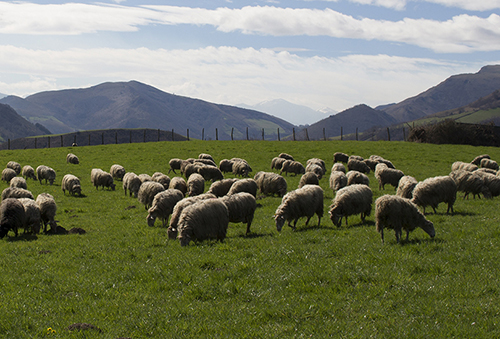 The aim of this study was to determine the mid-term effect of rotational grazing on soil ecosystem services and evaluate their synergies and trade-offs in the Basque region where pasture lands are being impacted by increased sheep production. Regenerative rotational grazing achieved 30% higher springtime grass production and 3.6% higher topsoil carbon storage than conventional rotational grazing.
The aim of this study was to determine the mid-term effect of rotational grazing on soil ecosystem services and evaluate their synergies and trade-offs in the Basque region where pasture lands are being impacted by increased sheep production. Regenerative rotational grazing achieved 30% higher springtime grass production and 3.6% higher topsoil carbon storage than conventional rotational grazing. 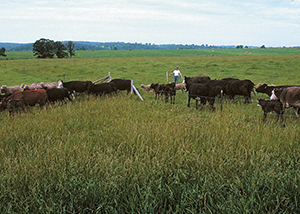 From the Abstract: "Previous research has shown that rotational grazing, specifically adaptive multipaddock (AMP) grazing that utilizes short-duration rotational grazing at high stocking densities, can increase soil C stocks in grassland ecosystems, but the extent and mechanisms are unknown. We conducted a large-scale on-farm study on five “across the fence” pairs of AMP and conventional grazing (CG) grasslands covering a spectrum of southeast United States grazing lands. We quantified soil C and nitrogen (N) stocks, their isotopic and Fourier-transform infrared spectroscopy signatures as well as their distribution among soil organic matter (SOM) physical fractions characterized by contrasting mechanisms of formation and persistence in soils. Our findings show that the AMP grazing sites had on average 13% (i.e., 9 Mg C ha− 1 ) more soil C and 9% (i.e., 1 Mg N ha− 1 ) more soil N compared to the CG sites over a 1 m depth. Additionally, the stocks’ difference was mostly in the mineral-associated organic matter fraction in the A-horizon, suggesting long-term persistence of soil C in AMP grazing farms. The higher N stocks and lower 15N abundance of AMP soils also point to higher N retention in these systems."
From the Abstract: "Previous research has shown that rotational grazing, specifically adaptive multipaddock (AMP) grazing that utilizes short-duration rotational grazing at high stocking densities, can increase soil C stocks in grassland ecosystems, but the extent and mechanisms are unknown. We conducted a large-scale on-farm study on five “across the fence” pairs of AMP and conventional grazing (CG) grasslands covering a spectrum of southeast United States grazing lands. We quantified soil C and nitrogen (N) stocks, their isotopic and Fourier-transform infrared spectroscopy signatures as well as their distribution among soil organic matter (SOM) physical fractions characterized by contrasting mechanisms of formation and persistence in soils. Our findings show that the AMP grazing sites had on average 13% (i.e., 9 Mg C ha− 1 ) more soil C and 9% (i.e., 1 Mg N ha− 1 ) more soil N compared to the CG sites over a 1 m depth. Additionally, the stocks’ difference was mostly in the mineral-associated organic matter fraction in the A-horizon, suggesting long-term persistence of soil C in AMP grazing farms. The higher N stocks and lower 15N abundance of AMP soils also point to higher N retention in these systems." Can regenerative agriculture produce enough nutritious food for the growing and increasingly affluent world population while also reducing and offsetting some anthropogenic emissions? A better question might be HOW to translate the science into clear and decisive action.
Can regenerative agriculture produce enough nutritious food for the growing and increasingly affluent world population while also reducing and offsetting some anthropogenic emissions? A better question might be HOW to translate the science into clear and decisive action.
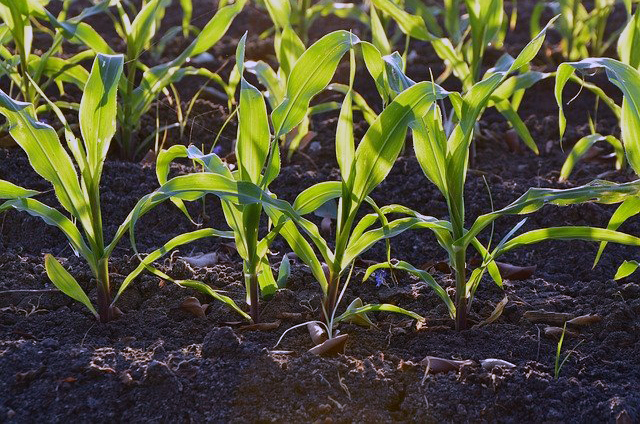 Soil organic carbon is the third-largest carbon stock after oceanic and geological pools. However, drivers and controls of belowground productivity and the fraction of total carbon fixation allocated below ground remain uncertain. This work adds to our understanding of the below ground carbon productivity response to climate change and provides a comprehensive global quantification of root/belowground productivity that will aid the budgeting and modeling of the global carbon cycle.
Soil organic carbon is the third-largest carbon stock after oceanic and geological pools. However, drivers and controls of belowground productivity and the fraction of total carbon fixation allocated below ground remain uncertain. This work adds to our understanding of the below ground carbon productivity response to climate change and provides a comprehensive global quantification of root/belowground productivity that will aid the budgeting and modeling of the global carbon cycle.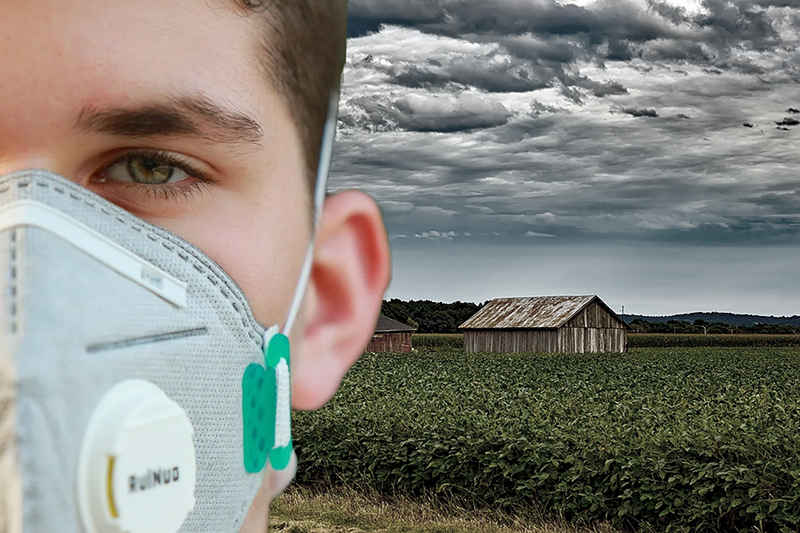 The tragedy of the COVID-19 pandemic has once again indicated the need for protecting, regenerating and sustaining our depleted and fragile soil. This article points out lessons of this crisis that can be used to make a stronger case for paving the way forward to more effectively combat climate change and better ensure food security.
The tragedy of the COVID-19 pandemic has once again indicated the need for protecting, regenerating and sustaining our depleted and fragile soil. This article points out lessons of this crisis that can be used to make a stronger case for paving the way forward to more effectively combat climate change and better ensure food security.
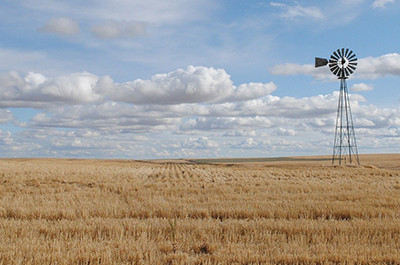 Cover crops improve soil health and environmental quality by enhancing soil organic carbon sequestration and nutrient cycling in agroecosystems. This study evaluated the effect of cover crops on soil CO2–C emissions, temperature, and water content during cover crop growth from April to October, 2017 and 2018 in New Mexico.
Cover crops improve soil health and environmental quality by enhancing soil organic carbon sequestration and nutrient cycling in agroecosystems. This study evaluated the effect of cover crops on soil CO2–C emissions, temperature, and water content during cover crop growth from April to October, 2017 and 2018 in New Mexico.
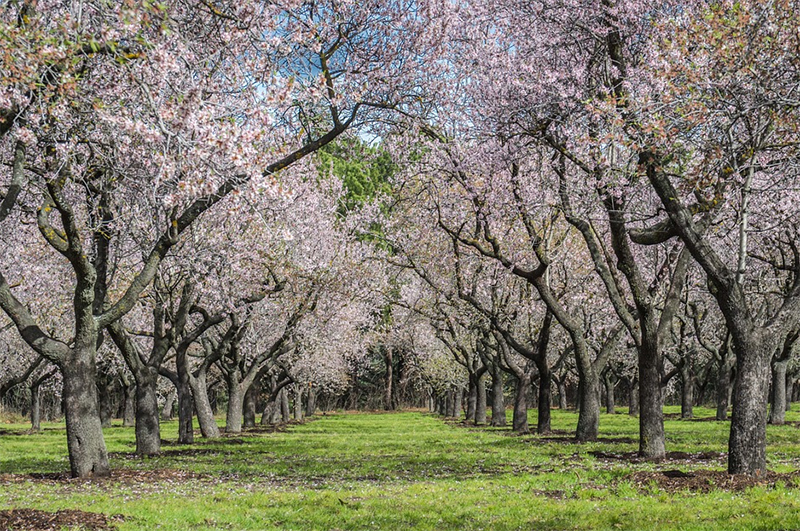 Recycling old almond tree biomass in situ prior to replanting an orchard is known as whole orchard recycling (WOR). It has potential as a carbon (C) negative practice to build soil C storage, soil health, and orchard productivity. Researchers in this study tested the potential of this practice for long term C sequestration and found it effective. It also led to higher yields and substantial improvement in soil functioning, including nutrient content, aggregation, porosity, and water retention.
Recycling old almond tree biomass in situ prior to replanting an orchard is known as whole orchard recycling (WOR). It has potential as a carbon (C) negative practice to build soil C storage, soil health, and orchard productivity. Researchers in this study tested the potential of this practice for long term C sequestration and found it effective. It also led to higher yields and substantial improvement in soil functioning, including nutrient content, aggregation, porosity, and water retention.
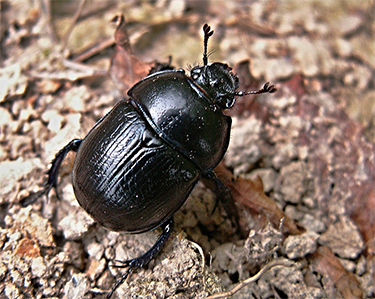 This study found that rangelands managed with more regenerative practices and lack of ivermectin applications had greater species richness, diversity, predator species abundance, and dung beetle abundance than more conventionally managed rangelands. The work shows that herd management that aims to mimic intensive grazing of large migrating herds of ruminants can foster dung arthropod community structure, a key trait correlated with nutrient cycling, pest suppression, and productivity of cattle-grazed rangelands.
This study found that rangelands managed with more regenerative practices and lack of ivermectin applications had greater species richness, diversity, predator species abundance, and dung beetle abundance than more conventionally managed rangelands. The work shows that herd management that aims to mimic intensive grazing of large migrating herds of ruminants can foster dung arthropod community structure, a key trait correlated with nutrient cycling, pest suppression, and productivity of cattle-grazed rangelands.
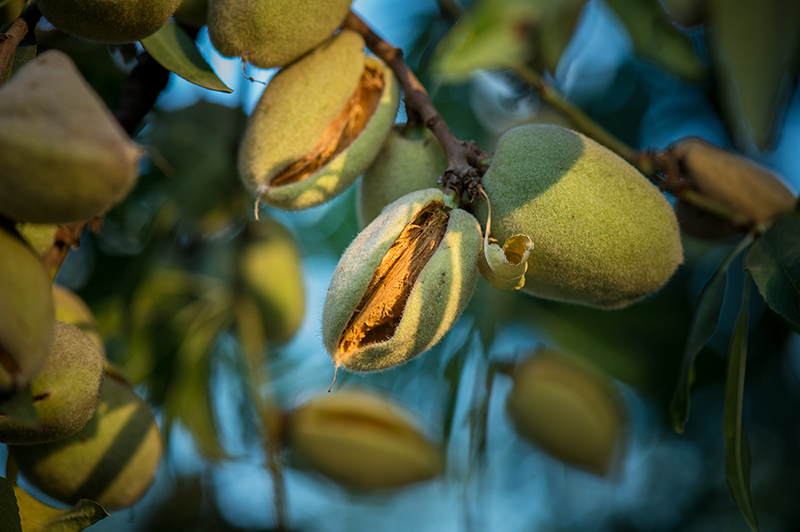 The American Farmland trust used a USDA Conservation Innovation Grant to quantify the economic and environmental benefits of soil health practices (no-till, strip-till, cover crops, nutrient management, conservation cover, compost application, and mulching). They also used the USDA’s Nutrient Tracking Tool and USDA’s COMET-Farm Tool to quantify the water quality and climate benefits of these practices.
The American Farmland trust used a USDA Conservation Innovation Grant to quantify the economic and environmental benefits of soil health practices (no-till, strip-till, cover crops, nutrient management, conservation cover, compost application, and mulching). They also used the USDA’s Nutrient Tracking Tool and USDA’s COMET-Farm Tool to quantify the water quality and climate benefits of these practices.
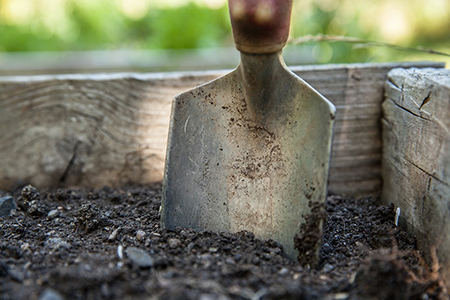 New research by Alexandra Kravchenko, Michigan State University professor in the Department of Plant, Soil and Microbial Sciences, and several of her colleagues provides new insight into how carbon is stored in soils that could support efforts to improve the climate resilience of cropping systems and also reduce their carbon footprints. Read more . . .(opens in new window) Read the original paper(opens in new window) here.
New research by Alexandra Kravchenko, Michigan State University professor in the Department of Plant, Soil and Microbial Sciences, and several of her colleagues provides new insight into how carbon is stored in soils that could support efforts to improve the climate resilience of cropping systems and also reduce their carbon footprints. Read more . . .(opens in new window) Read the original paper(opens in new window) here.
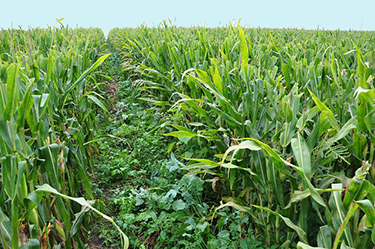 This paper summarizes how agricultural systems developed into what they are today and identifies ways in which these systems will need to be improved to meet future food security challenges. The core principles and concepts of conservation agriculture (CA) systems provide an important unifying framework. The paper provides evidence for why these systems, when flexibly applied and in ways that mimic natural ecosystems, provide the best approach for moving forward.
This paper summarizes how agricultural systems developed into what they are today and identifies ways in which these systems will need to be improved to meet future food security challenges. The core principles and concepts of conservation agriculture (CA) systems provide an important unifying framework. The paper provides evidence for why these systems, when flexibly applied and in ways that mimic natural ecosystems, provide the best approach for moving forward.
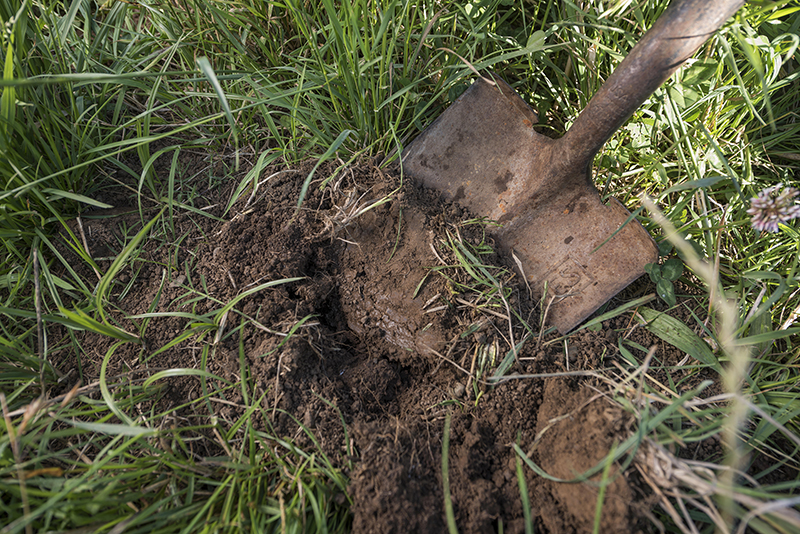 Bioinoculants are an increasing trend in agricultural practices. This review explores recent advances in our understanding of how arbuscular mycorrhizal fungi, ectomycorrhizal fungi, and phosphate-solubilizing bacteria help solubilize inorganic phosphate from insoluble forms and allocate it directly to crop plants.
Bioinoculants are an increasing trend in agricultural practices. This review explores recent advances in our understanding of how arbuscular mycorrhizal fungi, ectomycorrhizal fungi, and phosphate-solubilizing bacteria help solubilize inorganic phosphate from insoluble forms and allocate it directly to crop plants.
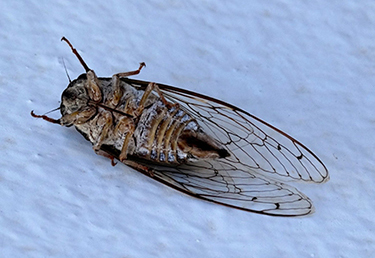 Abstract: "Biodiversity of insects is threatened worldwide. Here, we present a comprehensive review of 73 historical reports of insect declines from across the globe, and systematically assess the underlying drivers. Our work reveals dramatic rates of decline that may lead to the extinction of 40% of the world's insect species over the next few decades."
Abstract: "Biodiversity of insects is threatened worldwide. Here, we present a comprehensive review of 73 historical reports of insect declines from across the globe, and systematically assess the underlying drivers. Our work reveals dramatic rates of decline that may lead to the extinction of 40% of the world's insect species over the next few decades."
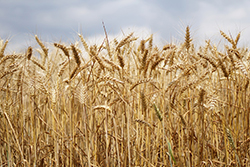 Abstract: "Global crop yield gains have not been associated with increases in the many macro- and micro-nutrients needed for a balanced human diet. There is thus growing interest in improving agricultural practices to increase nutrient availability to people. Because nutrients in crops come from soil, soil management—such as building soil organic matter—could be a tool in managing agriculture to produce more nutritious food. To understand the relationship between soil organic matter and nutritional quality, we measured soil organic matter fractions, crop yield, and wheat nutrient composition on smallholder farms along a land-use and land-cover gradient in Ethiopia. We found that wheat yields and protein content were related to organic matter nitrogen, and zinc content was related to organic matter carbon."
Abstract: "Global crop yield gains have not been associated with increases in the many macro- and micro-nutrients needed for a balanced human diet. There is thus growing interest in improving agricultural practices to increase nutrient availability to people. Because nutrients in crops come from soil, soil management—such as building soil organic matter—could be a tool in managing agriculture to produce more nutritious food. To understand the relationship between soil organic matter and nutritional quality, we measured soil organic matter fractions, crop yield, and wheat nutrient composition on smallholder farms along a land-use and land-cover gradient in Ethiopia. We found that wheat yields and protein content were related to organic matter nitrogen, and zinc content was related to organic matter carbon."
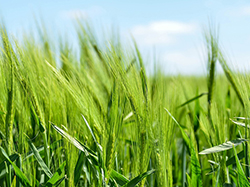 Abstract: "Modern agriculture is associated with numerous environmental predicaments, such as land degradation, water pollution, and greenhouse gas emission. Socio-economically, it is characterized by a treadmill of technological change, increased mechanization, and economic consolidation, while depressing economic returns to farmers. A root cause is the dominance of annual plants cultivated in monocultures. Annual crops require the yearly clearing of vegetation resulting in soil erosion and other forms of ecosystem degradation. Monocultures are susceptible to agricultural pests and weeds. By contrast, perennial polycultures informed by natural ecosystems, promise more sustainable agroecosystems with the potential to also revitalize the economic foundation of farming and hence rural societies."
Abstract: "Modern agriculture is associated with numerous environmental predicaments, such as land degradation, water pollution, and greenhouse gas emission. Socio-economically, it is characterized by a treadmill of technological change, increased mechanization, and economic consolidation, while depressing economic returns to farmers. A root cause is the dominance of annual plants cultivated in monocultures. Annual crops require the yearly clearing of vegetation resulting in soil erosion and other forms of ecosystem degradation. Monocultures are susceptible to agricultural pests and weeds. By contrast, perennial polycultures informed by natural ecosystems, promise more sustainable agroecosystems with the potential to also revitalize the economic foundation of farming and hence rural societies."
 Abstract: "Most spiders are generalist predators and important biological control agents of various insect pests of agricultural crops. A study was conducted to determine the impact of cultural practices on the abundance and diversity of soil surface-dwelling spiders (Araneae). Two experiments were conducted at the Chinhoyi University of Technology experimental farm, Zimbabwe, over the 2013/2014 and 2014/2015 cropping seasons."
Abstract: "Most spiders are generalist predators and important biological control agents of various insect pests of agricultural crops. A study was conducted to determine the impact of cultural practices on the abundance and diversity of soil surface-dwelling spiders (Araneae). Two experiments were conducted at the Chinhoyi University of Technology experimental farm, Zimbabwe, over the 2013/2014 and 2014/2015 cropping seasons."
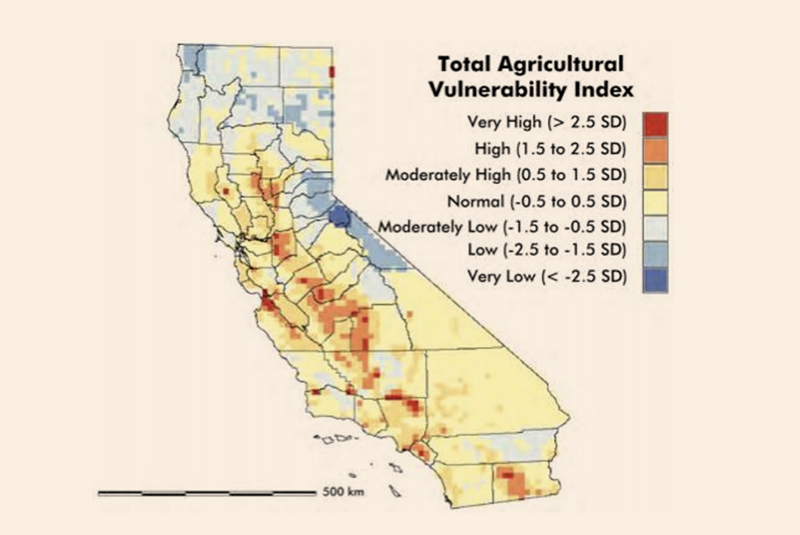 California is a global leader in the agricultural sector and produces more than 400 types of commodities. The state produces over a third of the country’s vegetables and two-thirds of its fruits and nuts. Despite being highly productive, current and future climate change poses many challenges to the agricultural sector. This paper provides a summary of the current state of knowledge on historical and future trends in climate and their impacts.
California is a global leader in the agricultural sector and produces more than 400 types of commodities. The state produces over a third of the country’s vegetables and two-thirds of its fruits and nuts. Despite being highly productive, current and future climate change poses many challenges to the agricultural sector. This paper provides a summary of the current state of knowledge on historical and future trends in climate and their impacts.
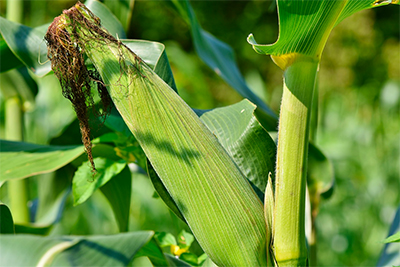 This paper evaluates the relative effects of regenerative and conventional corn production systems on pest management services, soil conservation, and farmer profitability and productivity. It shows that regenerative farming systems provided greater ecosystem services and profitability for farmers than an input-intensive model of corn production. Regenerative fields had ten times fewer pests. And even though regenerative fields had 29% lower yields, profits were 78% higher than traditional corn production systems.
This paper evaluates the relative effects of regenerative and conventional corn production systems on pest management services, soil conservation, and farmer profitability and productivity. It shows that regenerative farming systems provided greater ecosystem services and profitability for farmers than an input-intensive model of corn production. Regenerative fields had ten times fewer pests. And even though regenerative fields had 29% lower yields, profits were 78% higher than traditional corn production systems.
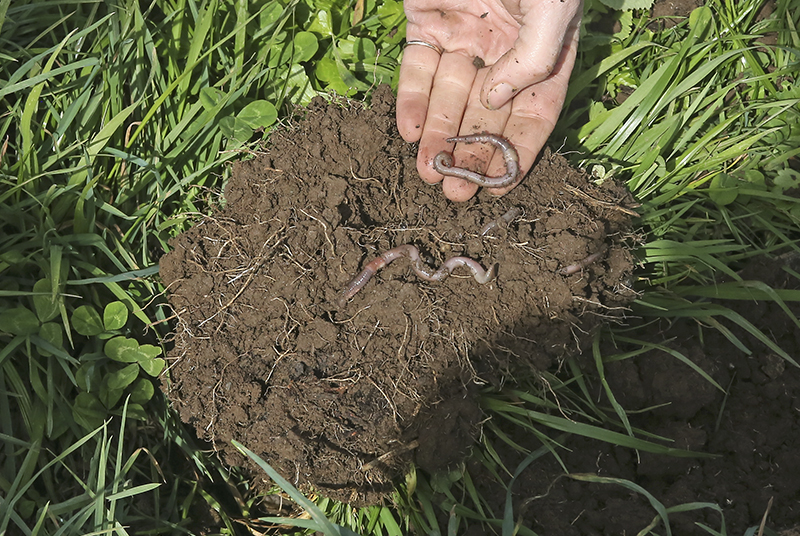 Abstract: "Plant diversity has been shown to determine the composition and functioning of soil biota. Although root-derived organic inputs are discussed as the main drivers of soil communities, experimental evidence is scarce. While there is some evidence that higher root biomass at high plant diversity increases substrate availability for soil biota, several studies have speculated that . . ." Read more now . . .(opens in new window)
Abstract: "Plant diversity has been shown to determine the composition and functioning of soil biota. Although root-derived organic inputs are discussed as the main drivers of soil communities, experimental evidence is scarce. While there is some evidence that higher root biomass at high plant diversity increases substrate availability for soil biota, several studies have speculated that . . ." Read more now . . .(opens in new window)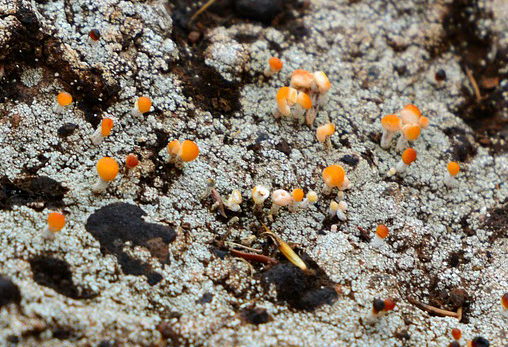 Despite several lines of observational evidence, there has been a lack of consensus on whether higher fungal:bacterial (F:B) ratios directly cause higher soil carbon (C) storage. This team employed RNA sequencing, protein profiling and isotope tracer techniques to evaluate whether differing F:B ratios are associated with differences in C storage. In the experiments they performed the increased abundance of fungi in both soils and the altered C cycling patterns in the F:B dominated soils highlight the significant role of fungi in litter decomposition and indicate that F:B ratios are linked to higher C storage potential.
Despite several lines of observational evidence, there has been a lack of consensus on whether higher fungal:bacterial (F:B) ratios directly cause higher soil carbon (C) storage. This team employed RNA sequencing, protein profiling and isotope tracer techniques to evaluate whether differing F:B ratios are associated with differences in C storage. In the experiments they performed the increased abundance of fungi in both soils and the altered C cycling patterns in the F:B dominated soils highlight the significant role of fungi in litter decomposition and indicate that F:B ratios are linked to higher C storage potential.
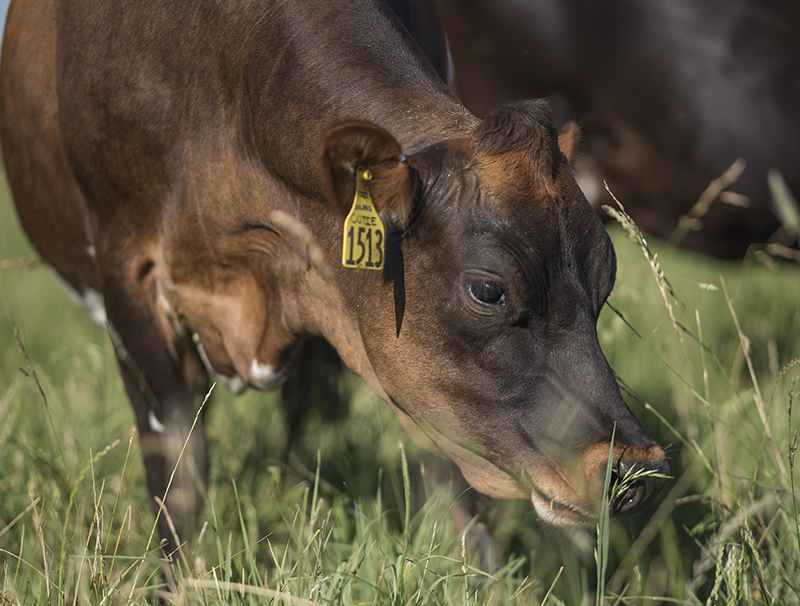 Because of the methane produced by rumen fermentation, ruminants are a source of greenhouse gas and are perceived as a problem. However, research shows that ruminants consuming only grazed forage cover plants under appropriate management result in more C sequestration than emissions. This research editorial concludes that incorporating forages and ruminants into regeneratively managed agroecosystems should be advanced as a policy. It can elevate soil organic C, improve soil ecological function by minimizing the damage of tillage and inorganic fertilizers and biocides, and enhance biodiversity and wildlife habitat. Read the entire editorial. (PDF)
Because of the methane produced by rumen fermentation, ruminants are a source of greenhouse gas and are perceived as a problem. However, research shows that ruminants consuming only grazed forage cover plants under appropriate management result in more C sequestration than emissions. This research editorial concludes that incorporating forages and ruminants into regeneratively managed agroecosystems should be advanced as a policy. It can elevate soil organic C, improve soil ecological function by minimizing the damage of tillage and inorganic fertilizers and biocides, and enhance biodiversity and wildlife habitat. Read the entire editorial. (PDF)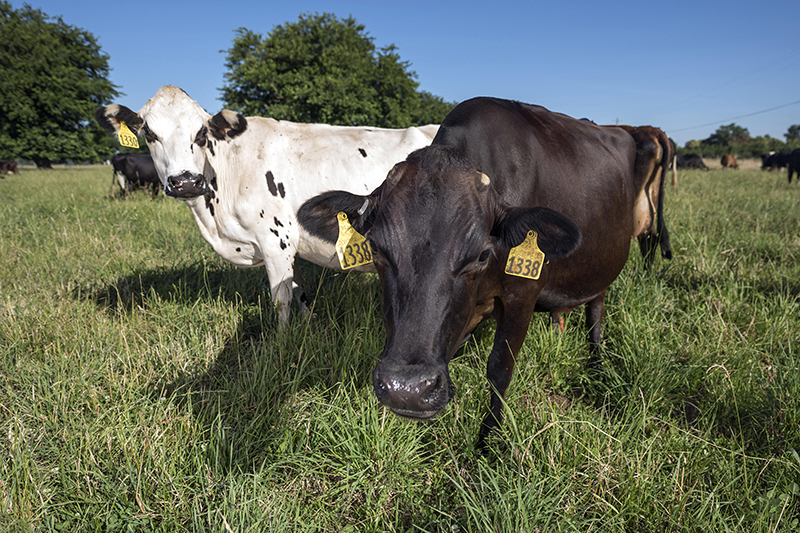 Abstract: "Loss of soil organic carbon (SOC) from agricultural land is identified as one of the major threats to soils, as it influences both fertility and the production of ecosystem services from agriculture. Losses of SOC across regions are often determined by monitoring in different land use systems. Results from agricultural field experiments can reveal increasing SOC stocks after implementation of specific management practices compared to a control, though in time series experiments the relative rate of change is often negative and implying an overall loss."
Abstract: "Loss of soil organic carbon (SOC) from agricultural land is identified as one of the major threats to soils, as it influences both fertility and the production of ecosystem services from agriculture. Losses of SOC across regions are often determined by monitoring in different land use systems. Results from agricultural field experiments can reveal increasing SOC stocks after implementation of specific management practices compared to a control, though in time series experiments the relative rate of change is often negative and implying an overall loss." Abstract: "The goal of microbiome engineering is to manipulate the microbiome toward a certain type of community that will optimize plant functions of interest. For instance, in crop production the goal is to reduce disease susceptibility, increase nutrient availability increase abiotic stress tolerance and increase crop yields. Various approaches can be devised to engineer the plant–microbiome, but one particularly promising approach is to take advantage of naturally evolved plant–microbiome communication channels."
Abstract: "The goal of microbiome engineering is to manipulate the microbiome toward a certain type of community that will optimize plant functions of interest. For instance, in crop production the goal is to reduce disease susceptibility, increase nutrient availability increase abiotic stress tolerance and increase crop yields. Various approaches can be devised to engineer the plant–microbiome, but one particularly promising approach is to take advantage of naturally evolved plant–microbiome communication channels."
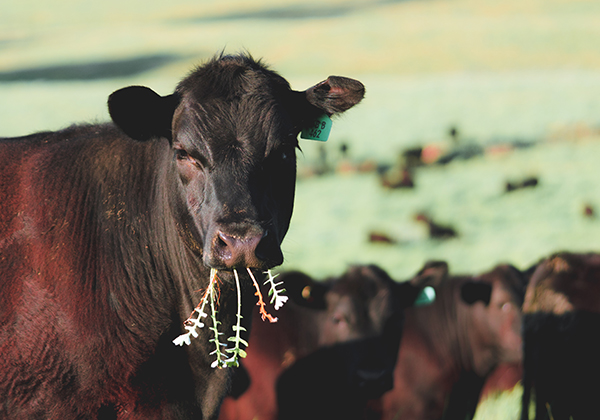 From the Abstract: "In a region of extensive soil degradation in the southeastern United States, we evaluated soil C accumulation for 3 years across a 7-year chronosequence of three farms converted to management-intensive grazing. Here we show that these farms accumulated C at 8.0 Mg ha−1 yr−1, increasing cation exchange and water holding capacity by 95% and 34%, respectively. Thus, within a decade of management-intensive grazing practices soil C levels returned to those of native forest soils, and likely decreased fertilizer and irrigation demands."
From the Abstract: "In a region of extensive soil degradation in the southeastern United States, we evaluated soil C accumulation for 3 years across a 7-year chronosequence of three farms converted to management-intensive grazing. Here we show that these farms accumulated C at 8.0 Mg ha−1 yr−1, increasing cation exchange and water holding capacity by 95% and 34%, respectively. Thus, within a decade of management-intensive grazing practices soil C levels returned to those of native forest soils, and likely decreased fertilizer and irrigation demands."
 Plant diversity strongly influences ecosystem functions and services, such as soil carbon storage. However, the mechanisms underlying the positive plant diversity effects on soil carbon storage are poorly understood. We explored this relationship using long-term data from a grassland biodiversity experiment (The Jena Experiment) and radiocarbon (14C) modeling.
Plant diversity strongly influences ecosystem functions and services, such as soil carbon storage. However, the mechanisms underlying the positive plant diversity effects on soil carbon storage are poorly understood. We explored this relationship using long-term data from a grassland biodiversity experiment (The Jena Experiment) and radiocarbon (14C) modeling.
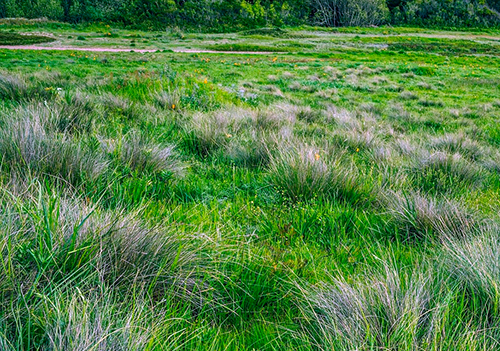 An 11-year grassland biodiversity experiment investigated whether plant diversity affects soil C and N storage in the absence of legumes. They found that soil C and N stocks increased by 18% and 16% in eight-species mixtures compared to the average of monocultures of the same species, respectively. Enhanced soil C and N stocks also showed a positive feedback to plant productivity via enhanced N mineralization, which could further accelerate soil C and N storage in the long term.
An 11-year grassland biodiversity experiment investigated whether plant diversity affects soil C and N storage in the absence of legumes. They found that soil C and N stocks increased by 18% and 16% in eight-species mixtures compared to the average of monocultures of the same species, respectively. Enhanced soil C and N stocks also showed a positive feedback to plant productivity via enhanced N mineralization, which could further accelerate soil C and N storage in the long term.
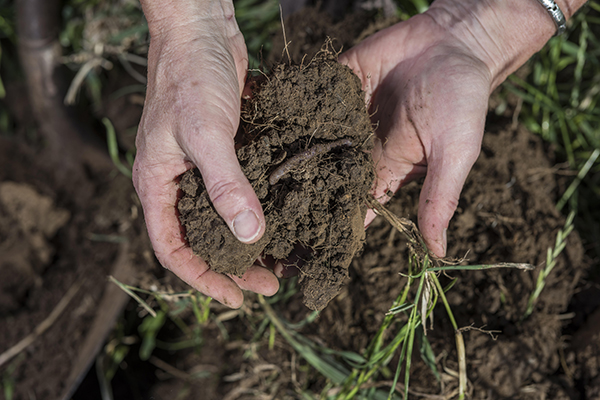 Increased long term (20-50 year) sequestration of carbon in soils, plants and plant products will benefit the environment and agriculture. Crop, grazing, and forestlands can be managed for both economic productivity and carbon sequestration. In many settings this dual management approach can be achieved by applying currently recognized best management practices such as conservation tillage, efficient nutrient management, erosion control, use of cover crops and restoration of degraded soils. PDf (PDF)
Increased long term (20-50 year) sequestration of carbon in soils, plants and plant products will benefit the environment and agriculture. Crop, grazing, and forestlands can be managed for both economic productivity and carbon sequestration. In many settings this dual management approach can be achieved by applying currently recognized best management practices such as conservation tillage, efficient nutrient management, erosion control, use of cover crops and restoration of degraded soils. PDf (PDF)
